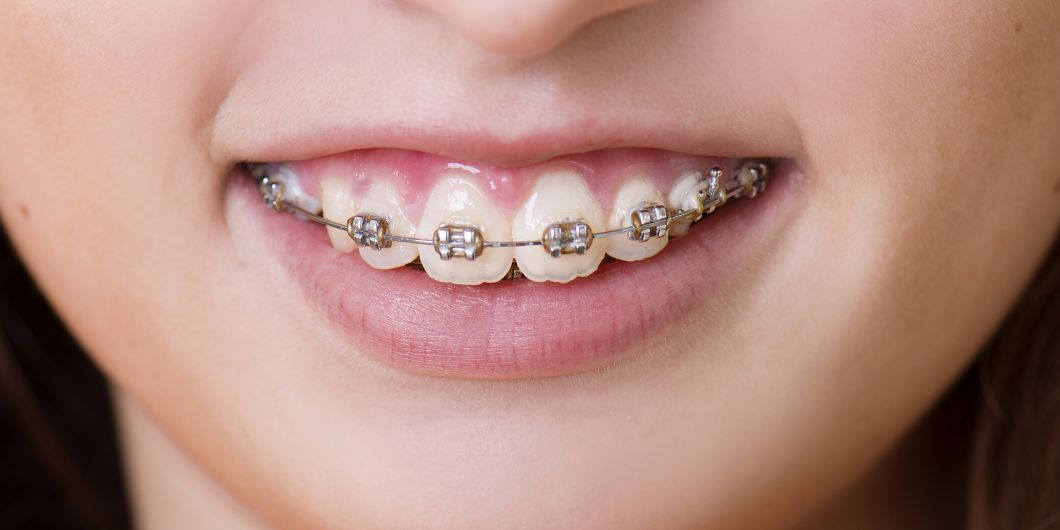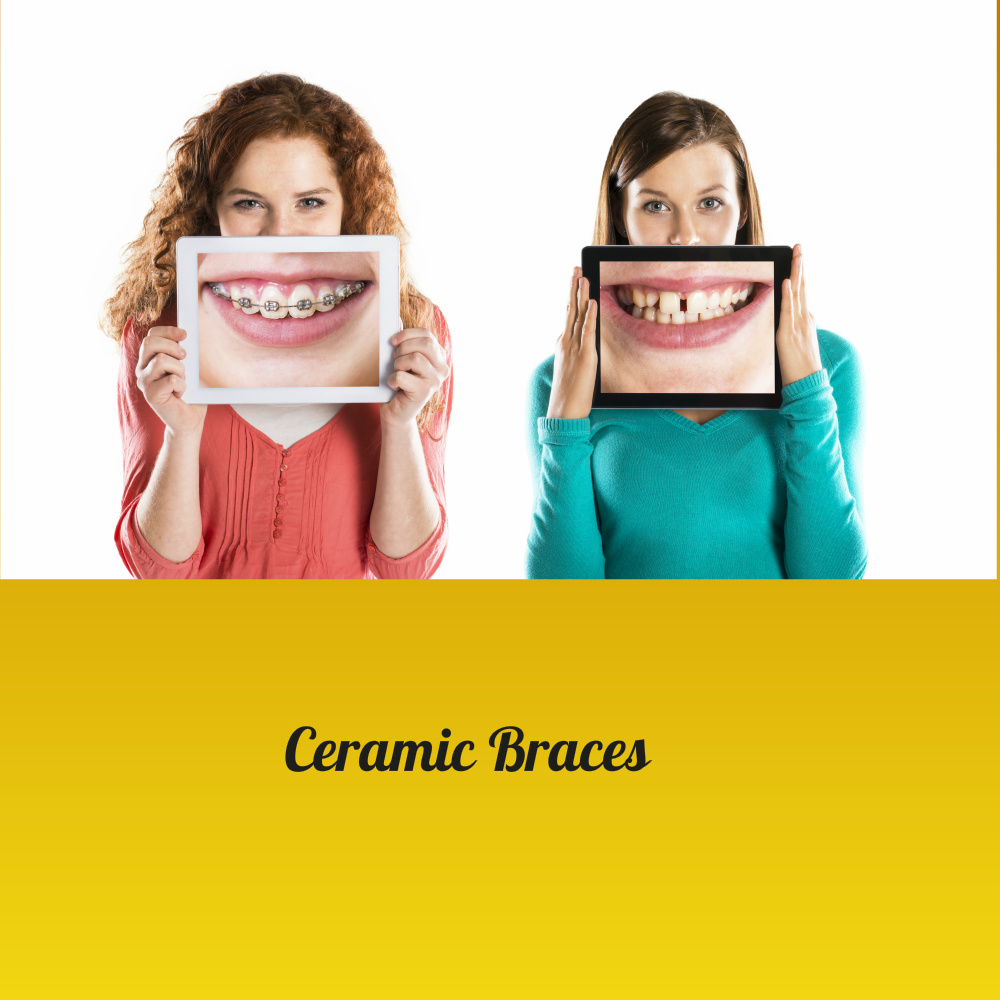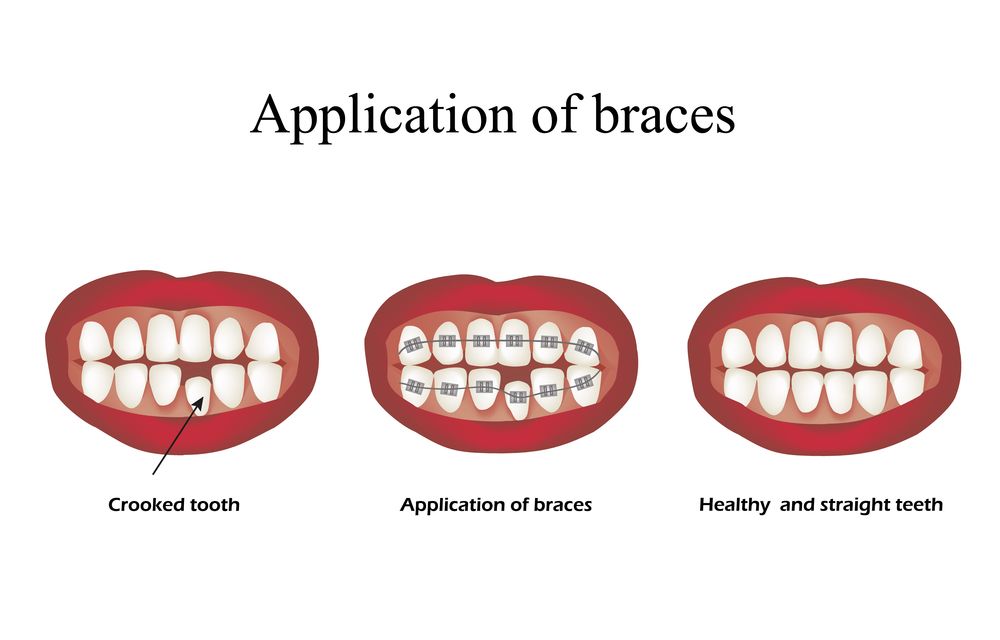- in Orthodontic by tony
Ceramic Braces Treatment

Will An Orthodontic Ceramic Braces Treatment Hurt Me?
It could be tough to answer this question directly, without taking into consideration the malocclusions and the physiological and psychological variants in the perception of pain by fitting an orthodontic ceramic brace in the dental practice.
More...
Looking at the science behind this, wikipedia (2017) states that Pain is an uncomfortable sensory and emotional experience associated with actual or potential tissue damage. Thereby, suffering would be regarded as an experience of unpleasantness and aversion associated with harm or any threat of harm to the person.
Differences in perception and tolerance thresholds to pain are associated with cultural, genetics, and gender elements. Someone may experience a medical method or social trial to be acceptable, whereas, his colleague within the same trial may perceive the entire encounter to be rather horrible and intolerable and this briefly explains why we can experience pain in many different ways.
Trying to predict if the treatment in your clinic would be uncomplicated is impossible, but most orthodontists report it can be somewhat, painless, with small duration of unpleasantness at the start. The main reason for this discomfort is summarized below.
Acceptance of the orthodontist ceramic brace therapy is a straightforward criterion if you wish to carry on with your treatment program which could last approximately three years, and some would refer to this as the "mindset."
If the child is subjected to social teasing and ridicules at school, with defamatory nicknames similar to "What's up metal mouth"?

The child's unwillingness to continuing treatment will diminish, and the annoyance from wearing the orthodontist ceramic brace will amplify the child's pain threshold to vindicate the termination of further dental treatments.
Some would propose that early childhood was an "ideal time" for the orthodontic therapy for your child if the clinician wishes to maximize the benefits of the child's growth and development without subjecting every youngster to orthodontist braces for many years in the future.
Early treatment could prevent long-term problems in the future or the desire for repeated therapy in their adult years. Nevertheless, things are not just Black, and White and the discussion surrounding early as opposed to the late orthodontic therapy is often frustrating and complex to the dental care fraternity (J Orthod Res 2013).
What age can Ceramic Braces treatment start
Braces may possibly be applied to a child as young as seven years, but children of twelve years and more are suitable choices for braces as all the adult teeth are in place by this age. Children normally lose their last baby tooth around the age of 12.
The loss of a baby tooth is succeeded almost immediately with an eruption of the equivalent permanent one. If a milk tooth has been lost and a replacement does not show up in a decent amount of time, perhaps because it is crowded, impacted (headed in the wrong direction), or missing. The most effective way to identify what is going on is an orthodontic x-ray within the centre.
Things that cause the discomfort and pain
There certainly may be an unpleasant tension applied when a new appliance is placed inside the mouth, and this anguish and in some cases, hurting can proceed for a few days shortly after the braces are fixed and remodelling of the bone continues, gradually decreasing the pressure. In most cases, this can possibly be anticipated and is normal.

What just isn't normal is when there is swelling, bleeding, or any other issue with the teeth or gums that just seems to be unreasonable. You should also call your local orthodontist if there is certainly a part of your child's night guard that is routinely irritating them, or you notice a problem that just does not seem correct. Currently, there are also many simple orthodontic emergencies that you can manage in your home.
Throughout the next few days, your body adapts to the new position of the tooth by dissolving bone in the area where there is pressure. This remodelling of the bone relieves the pressure on the tooth, making you feel better, and causes the tooth moving to a different and desirable/ functional position.
Depending on how crooked your tooth is or how much the wire or plastic is meant to move the tooth after your adjustment, the technique may repeat itself, and your soreness may continue. When the tooth has reached the eventual and its final position, the force will then stop, and the tooth will relax in its new position and your discomfort will ultimately settle down and the brace will then only function as a guide.
Bear in mind, the procedure is normally the same for wires, plastic aligners, rubber separators, etc. If a tooth is being pushed, there will be some discomfort to the person.
On the other hand, threshold tolerance to the unpleasantness correlated with most orthodontic procedure shows a large variation of the variant in pain perception to each individual because the amount of applied pressure is relative to the discomfort. However, looking at a number of case history and cited evidence have informed me that some people barely experience anything to those that say; their pain was excruciating, but the latter is very uncommon.
General over-the-counter analgesics like Advil and Tylenol are normally enough to make it through the first two days. Different patients, insist that chewing sugarless gum reduces the length of time they ache. This makes good sense as it would be like rubbing a cramping calf muscle after getting a Charlie Horse.
Whenever the orthodontist tightens up the braces, they could easily hurt for a few days. Ensure that, the orthodontist is not being too zealous in their treatment and the painkillers can alleviate with the discomfort after each sitting. Check that the prescribed analgesic is appropriate for the child's age. Aside from that, the brackets in the braces can cause unpleasant sores on the inner cheeks and lips. An application of dental wax over the brackets can help lessen the tenderness.
Health and dietary issues with Ceramic Braces
Eating with braces are quite challenging and leads to some problems, initially, a soft food diet is best. The clinic could provide you with dietary handout and soft foods like soups are most suitable, following the first few days of medical treatment. While you have braces on, you probably shouldn't eat hard, crunchy or sticky foods as these can harm the braces.
You must also be more careful about dental hygiene to avoid becoming infected and orthodontic dilemmas. Orthodontic difficulties can include trauma, sores, and swelling, lose or broken braces, and unforeseen tooth movements (mostly over-correction).
Always use a soft toothbrush, and the brush should be angled to reach the area above, on and below the brackets.
Unique things to consider for Ceramic Braces
This kind of brace is built from composite substances usually ceramic or plastic alloys. It cannot be stained but the bands that hold the wire can blemish your teeth. Some foods like curries, if you drink coffee or if you smoke can cause the colors within the bands to leech out and tarnish the teeth.
Ceramic braces are the regular solution to metal braces because it is less conspicuous than metal braces. However, this variety of brace is also more delicate because ceramic is like glass which is brittle.
Will exchanging my brace change my irritation

Just like braces, clear aligners (Invisalign) work by putting tension on the teeth. Instead of the force being produced by a wire, it is produced by the versatile plastic used to build the flexible shells that cover your teeth. The functionality of braces is to move teeth into a preferred setting and that what makes treatment uncomfortable.
Changing the type of brace will not change the pain, consult your orthodontist to ensure there isn't something wrong with the brace and be careful not to exceed the daily dosage of pain-killers. Your orthodontist could suggest some natural ways to reduce discomfort.
In conclusion
The style of brace apparatus you settle on is more cosmetic than functional because they tend to work in the same way and the amount of resetting will decide the total pressure involved to accomplish this treatment and this is usually proportional to the discomfort you could envisage from this treatment.
The total overall force brought to bear is reduced to prevent damage and moderate discomfort and this is the reason why treatment has been continued over a long period to reduce the total uneasiness to a minimum. Various coping components gender, culture and genetic variations is rather difficult to predict overall.
The preference of ceramic braces hinges on aesthetic, financial and the malocclusion singularity. The orthodontist may also possess a personal alternative which possibly be based on their previous approach skills and knowledge.
Failure to deal with any malocclusion could cause more physical and psychological pain later on in the future and be more expensive.
so if teeth are harder than steel they must also be harder than Bone and if they're harder than bone then why does your jaw which is made of bone not crumble under all that pressure
there's a bit of tissue called the periodontal ligament or PDL around your teeth under your gums
the PDL is the shock absorber cushioning your jaw bone from all the chewing forces
okay so far
so good but what if your teeth come in all funky sure it looks kind of goofy but that's not the only reason that somebody might want friction funky tooth can interfere with the way the top annoys you so how do we fix fish well we basically break our mouths with braces
except it's actually our bodies that do the breaking the PDL has these cells called mechanoreceptors and when these cells detect a force on your teeth that's too big like if you accidentally bite into your fork they signal the brain to stop biting down before you hurt yourself
braces tether your teeth pulling them together or pushing them apart either way they're applying a steady force to your teeth and when mechanoreceptors in the PDL sense this kind of smaller but sustained force they signal cells called osteoclasts to the area which spew out acid and proteins to dissolve parts of your jabba then the mechanoreceptors signal osteoblasts to come and those cells deposit minerals that make bone osteoblasts rebuild
the jawbone in a new shape that lets the PDL hold teeth in the new position so braces basically force your body to dissolve itself and then rebuild itself according to their evil whims
sounds barbaric right but your body is actually breaking down and rebuilding bone using osteoclasts and osteoblasts all the time not just if you have braces bone remodeling is just the way our body grows the infant body replaces almost all of its original skeleton by the time it's a year old and it happens throughout our entire life
10% of my bone material is technically new since last year we can manipulate the bone remodeling process to not only get straighter teeth but also to treat diseases like osteoporosis which make your bones very brittle by keeping overactive osteoclasts from dissolving the bone
so much or by boosting osteoblasts to produce more bone drugs can prevent bones in those patients from breaking so easily people with severe bone injury have to rely on bone transplants where they take bone from other parts of their body and move it to the damaged area which is sometimes not even possible and is always painful
so instead Paula Hammonds group at MIT has created a new material that very slowly releases proteins and these proteins cause osteoblasts to go right to the site where the injury happened and generate new bone
now this was a really big deal for us because it's really hard to generate something that very slowly releases the protein most of the time the protein comes out very rapidly and gets swept away in the body
so that it no longer has any effect it's easy to write braces off as a form of medieval torture but it's kind of amazing that this mouth torture actually works and the technology that makes it possible is not just in your braces it's in your bones
hi my name is Andrea and thank you for watching this episode of science out loud
